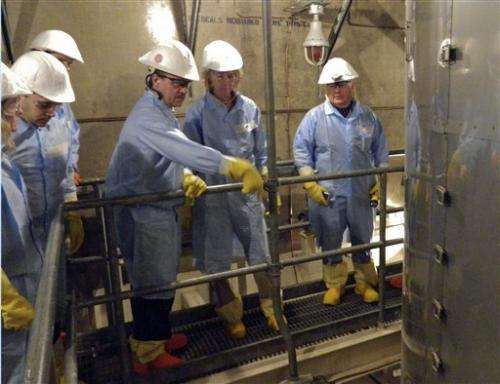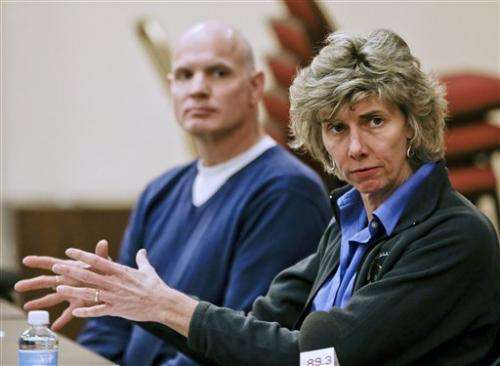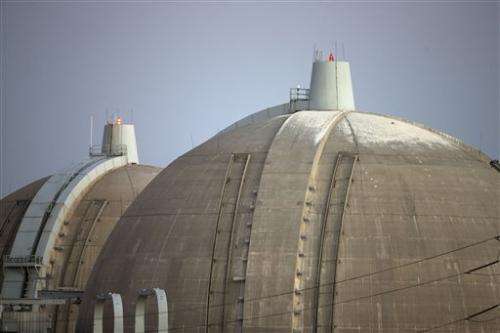Nuclear chief: US plants safer after Japan crisis

Two years after the nuclear crisis in Japan, the top U.S. regulator says American nuclear power plants are safer than ever, though not trouble-free. A watchdog group calls that assessment overly rosy.
"The performance is quite good," Nuclear Regulatory Commission Chairman Allison Macfarlane said in an interview with The Associated Press.
All but five of the 104 U.S. nuclear reactors were performing at acceptable safety levels at the end of 2012, Macfarlane said, citing a recent NRC report. "You can't engage that many reactors and not have a few that are going to have difficulty," she said.
But the watchdog group, the Union of Concerned Scientists, has issued a scathing report saying nearly one in six U.S. nuclear reactors experienced safety breaches last year, due in part to weak oversight. The group accused the NRC of "tolerating the intolerable."
Using the agency's own data, the scientists group said 14 serious incidents, ranging from broken or impaired safety equipment to a cooling water leak, were reported last year. Over the past three years, 40 of the 104 U.S. reactors experienced one or more serious safety-related incidents that required additional action by the NRC, the report said.
"The NRC has repeatedly failed to enforce essential safety regulations," wrote David Lochbaum, director of the group's Nuclear Safety Project and author of the study. "Failing to enforce existing safety regulations is literally a gamble that places lives at stake."
NRC officials disputed the report and said none of the reported incidents harmed workers or the public.
Monday marks the two-year anniversary of the 2011 earthquake and tsunami that crippled Japan's Fukushima Dai-ichi nuclear plant. U.S. regulators, safety advocates and the industry are now debating whether safety changes imposed after the disaster have made the 65 U.S. nuclear plants safer.

New rules imposed by the NRC require plant operators to install or improve venting systems to limit core damage in a serious accident and set up sophisticated equipment to monitor water levels in pools of spent nuclear fuel.
The plants also must improve protection of safety equipment installed after the Sept. 11, 2001, terrorist attacks and make sure they can handle damage to multiple reactors at the same time.
Macfarlane, who took over as NRC chairwoman last July, said U.S. plants are operating safely and are making progress on implementing the new rules, which impose a deadline for completion of 2016—five years after the Fukushima disaster. "So far, industry seems to be cooperating," she said.
The NRC has been working closely with plant operators "to make sure they understand what we are requiring and that we understand about their situation as well," said Macfarlane.
Even so, the U.S. industry faces a range of difficulties. Problem-plagued plants in Florida and Wisconsin are slated for closure, and four other reactors remain offline because of safety concerns. Shut-down reactors include two at the beleaguered San Onofre nuclear power plant in southern California, which hasn't produced electricity since January 2012, when a tiny radiation leak led to the discovery of damage to hundreds of tubes that carry radioactive water.
Macfarlane said the agency won't let the San Onofre plant reopen until regulators are certain it can operate safely, which may take several months.
Joseph Pollock, vice president of the Nuclear Energy Institute, an industry trade association, said plant operators are "working aggressively" to meet the 2016 timeline set by the NRC and have already spent upwards of $40 million on safety efforts. Utilities have bought more than 1,500 pieces of equipment, from emergency diesel generators to sump pumps and satellite phones, Pollock said, and the industry is setting up two regional response centers in Memphis and Phoenix.
The industry expects to meet the 2016 timeline "with the current understood requirements," Pollock said. If the requirements change or new regulations are added, "then obviously we would have to review that," he said.
Even before the new rules are completely in place, the NRC is considering a new regulation related to the Japan disaster: requiring nuclear operators to spend tens of millions of dollars to install filtered vents at two dozen reactors.

NRC staff recommended the filters as a way to prevent radioactive particles from escaping into the atmosphere after a core meltdown. The filters are required in Japan and throughout much of Europe, but U.S. utilities say they are unnecessary and expensive.
The Nuclear Energy Institute said filters may work in some situations, but not all. The group is calling for a "performance-based approach" that allows a case-by-case determination of whether filtering is the best approach to protect public safety and the environment.
"We're not against filtering. It's how you achieve it," said Marvin Fertel, the group's president and CEO.
The filter issue has ignited a debate on Capitol Hill. Lawmakers from both parties have sent out a flurry of dueling letters for and against the proposal. Twenty-eight Republicans in the House and Senate, joined by more than two dozen House Democrats, have sent letters opposing the requirement as hasty and unnecessary.
A dozen Democratic senators and five House members have written letters backing the requirement, which they say will ensure public safety in the event of a Japan-style accident. The five-member commission is expected to vote on the issue in the next few weeks.
"It's not the time to be rash with hasty new rules, especially when the NRC has added 40-plus 'safety enhancements' " to its initial requirements following the Japan disaster, said Sen. David Vitter of Louisiana, senior Republican on the Senate Environment and Public Works Committee.
Sen. Barbara Boxer of California, who chairs the committee, said the filters were needed to protect the 31 U.S. nuclear reactors that have similar designs to the ones that melted down in Japan.
The filters "world reduce the amount of radioactive material released into the environment" in a severe nuclear accident, Boxer wrote in a letter signed by 11 fellow Democrats. "These technologies have been demonstrated in nuclear plants around the world."
Boxer, whose committee has held seven oversight hearings since the Japan disaster, has asked the NRC to report to her on the agency's progress implementing the post-Fukushima safety reforms.
"It is vital that U.S. nuclear power plants fully incorporate the lessons learned from this disaster," she said.
Copyright 2013 The Associated Press. All rights reserved. This material may not be published, broadcast, rewritten or redistributed.



















